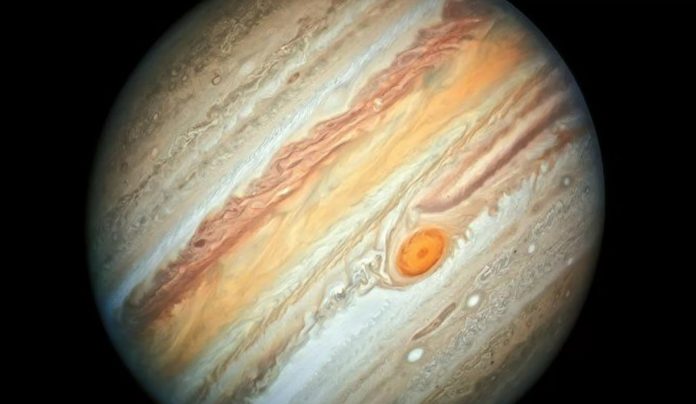We all know that Jupiter, the fifth planet from the Sun, looks like a sphere covered in stripes. Why this aspect of the largest planet in our solar system?
Jupiter is striped due to the many complex and multidirectional atmospheric currents, revealed Oleg Korabliov, deputy director of the Institute for Space Research at the Russian Academy of Sciences.
- Brief Anger Hampers Blood Vessel Function Leading to Increased Risk of Heart Disease and Stroke – New Study
- New Blood Test Pinpoints Future Stroke Risk – Study Identifies Inflammatory Molecules as Key Biomarker
- Enceladus: A Potential Haven for Extraterrestrial Life in its Hidden Ocean Depths
- New Experiment: Dark Matter Is Not As ‘DARK’ As All We Think
- Scientists in Fear of This New Predator From Red Sea Eating Native Species in Mediterranean
“The atmosphere of Jupiter contains impurities that give it color. It has very complex atmospheric currents, in principle similar to those we have on Earth, except that in Jupiter there are many circulating cells of this type,” Korabliov explained.
Each of the currents goes in different directions and eddies form at their limits, similar to cyclones and anticyclones on Earth. For this reason, in the photos of the planet, we can see these stripes and spirals.
The most famous of these vortices is the Great Red Spot which, unlike cyclones on Earth, is very stable and has already existed for hundreds of years.
Due to its rotating metalcore, Jupiter has a very powerful magnetic field, so, like Earth, it has well-developed radiation belts, the scientist added.
However, the Jupiter system is a completely inhospitable world and none of its satellites can be considered as a possible future haven for the human race, Korabliov noted.
